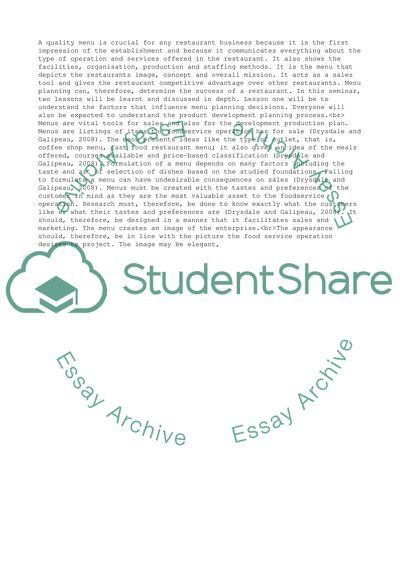Cite this document
(Menu planing and product development Essay Example | Topics and Well Written Essays - 2500 words, n.d.)
Menu planing and product development Essay Example | Topics and Well Written Essays - 2500 words. https://studentshare.org/management/1867269-menu-planing-and-product-development
Menu planing and product development Essay Example | Topics and Well Written Essays - 2500 words. https://studentshare.org/management/1867269-menu-planing-and-product-development
(Menu Planing and Product Development Essay Example | Topics and Well Written Essays - 2500 Words)
Menu Planing and Product Development Essay Example | Topics and Well Written Essays - 2500 Words. https://studentshare.org/management/1867269-menu-planing-and-product-development.
Menu Planing and Product Development Essay Example | Topics and Well Written Essays - 2500 Words. https://studentshare.org/management/1867269-menu-planing-and-product-development.
“Menu Planing and Product Development Essay Example | Topics and Well Written Essays - 2500 Words”. https://studentshare.org/management/1867269-menu-planing-and-product-development.


